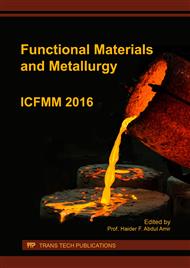p.50
p.55
p.59
p.67
p.72
p.77
p.85
p.90
p.97
A Study on Metallographic Microstructure of Steel Materials Subjected to Fire
Abstract:
In view of the fact that construction of modern buildings tends to use a high ratio of iron materials, this study aimed to obtain the ratio of components of steel’s microstructure under different test conditions by heating a A36 steel sheet commonly used in buildings, and applying metallographic replication testing. When the steel sheet was heated above 800°C and then rapidly cooled by water, the ratio of components of the structure were changed dramatically: components such as pearlite disappeared, ferrite was reduced from 90% to a low of 20%, bainite was increased to a maximum of 35%, and martensite was increased to a maximum of 45%. Since the substantial increase of martensite phase in this study led the microstructure of iron material to become thinned out and scattered, the ductility of such material was significantly reduced accordingly, thereby making the steel sheet easily broken. This study expected to provide the test findings of the mechanical behavior and metallographic structure of steel, after being heated to a high temperature and then naturally cooled, to other relevant units of construction engineering to serve as reference for their evaluation of non-destructive testing of steel structures.
Info:
Periodical:
Pages:
72-76
Citation:
Online since:
September 2017
Authors:
Price:
Сopyright:
© 2017 Trans Tech Publications Ltd. All Rights Reserved
Share:
Citation:


